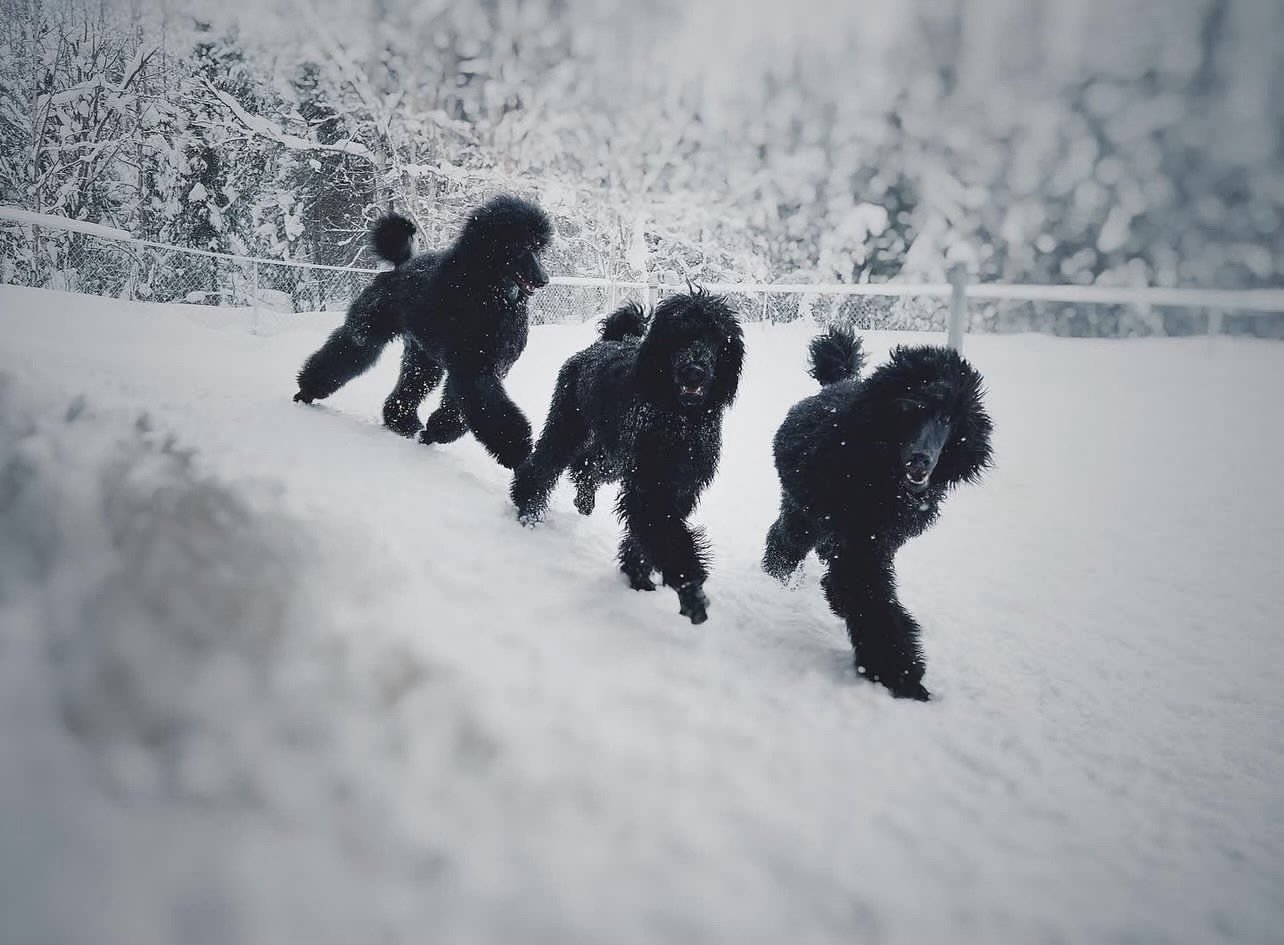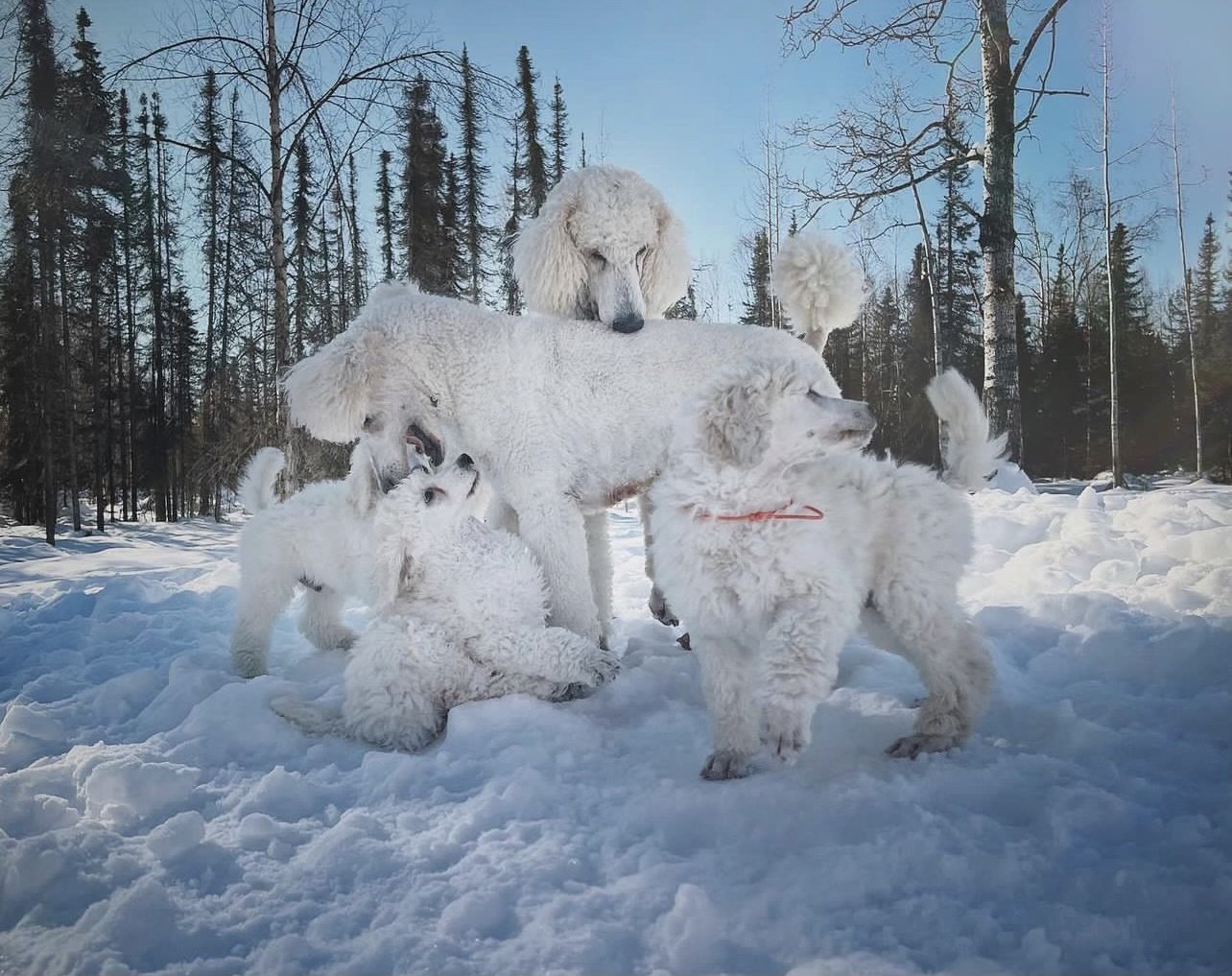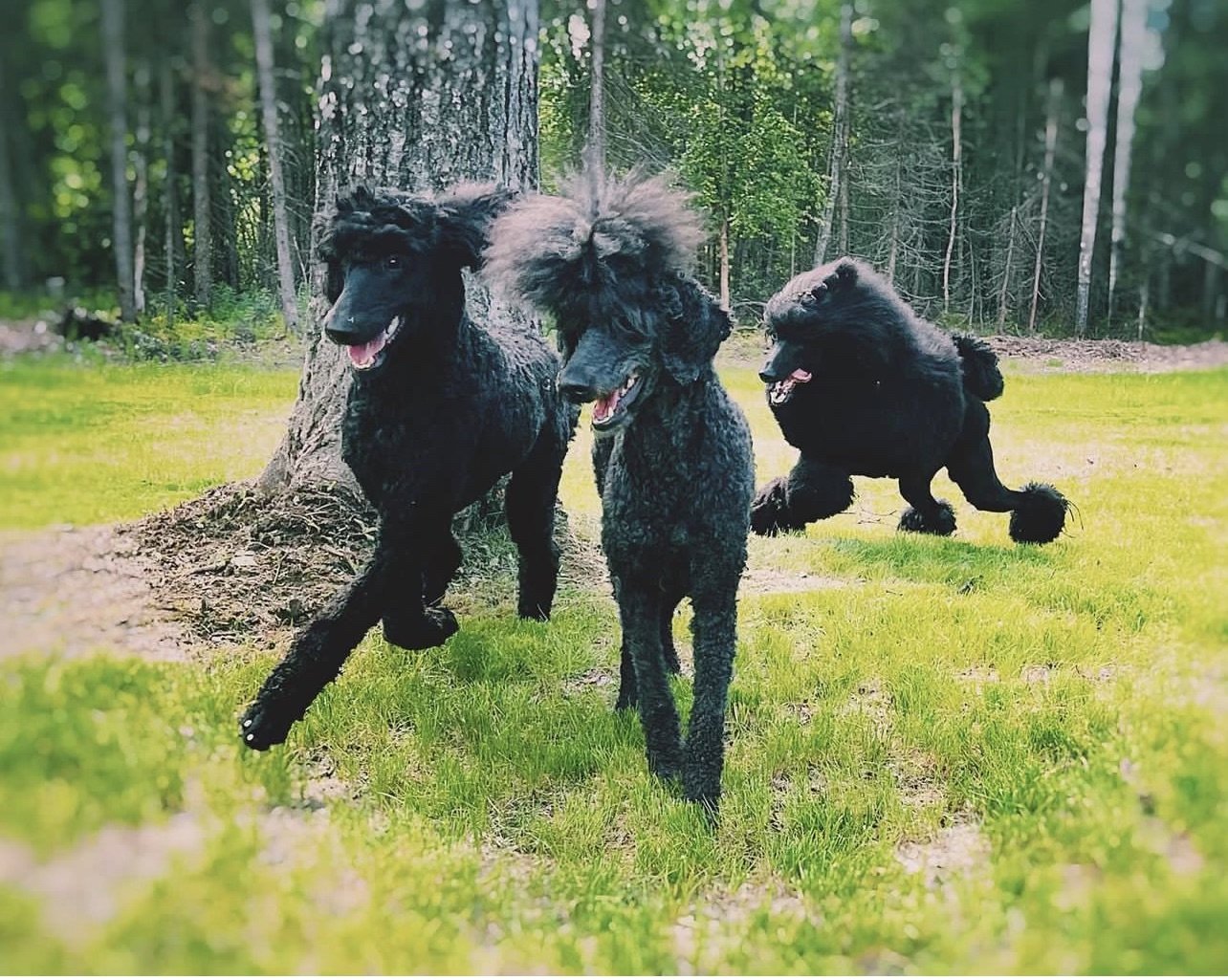Studying the history of my poodles.
Seren sits in her ex-pen, she’s staring at me while delivering her signature high-pitched bark. She is insisting I release her from her confinement.
“You get this prima-Donna attitude from your grandmother,” I tell her as I toss some treats into her pen to distract her. I know it will only work for a moment.
While Seren snuffles around her pen for the treats I tossed, Sojourner excitedly prances over to find out what Seren is snacking on . He stands with his four feet square, neck perfectly arched as he observes the puppy and her treats.
Although his size comes down from his paternal grandmother, Sojourner’s structure and his way of presenting himself is all from his mother. His expression is a dead ringer for his mom, while it rests in a head that favors his father.
Every day I can see pieces of my poodles’ lineages in their bodies and temperaments. I can see the attitude of a grandfather, the feet of an aunt, the shoulder of a great-grandmother or the head of a half sibling who may live on the other side of the world.
It is important business, knowing a family line in poodles.
I am of the firm opinion that knowing a pedigree is the most basic level of breeding in an accountable breeding program. The pedigree offers a huge window into the history of a specific poodle. When I study a pedigree, I learn everything available about the poodles that have gone before my breedings.
For example; there are no health tests that can predict Addison’s disease. But learning about the poodles in a pedigree can tell me if Addison’s has cropped up in a family of poodles. I can also learn where in the pedigree it arrived and how common Addison’s has been in other poodles of the same line.
Another common health issue I study is bloat. The poodle is a breed that is built with a deep chest. This type of structure naturally increases the risk of bloat in the standard poodle variety of the poodle breed. This same risk is also common in other deep chested dog breeds such as Great Danes, Doberman Pinschers, the Weimaraner and others.
The most updated science we have tells us that bloat is likely a genetic or environmental issue. Again, there is no genetic test that can predict a poodle’s risk of bloat… so once again, I find myself studying pedigrees to learn when and where bloat has appeared in a line.
I will admit; studying pedigrees is not for the faint of heart.
When I first began my studies, I started by looking for tell-tale commonalities that would separate one poodle line from another, I would find a popular stud, meaning a male poodle that was used by several different breeders for multiple females. I would go through and find all the photos and videos I could of this male. Next I would find out as much information as I could about the poodle puppies this particular male sired. I would follow lines back as far as I could and look for consistencies in the build, coat type, temperament and health.
This type of research takes weeks, months and years of dedication. It also takes an ability to reach out to people, begin conversations, and most importantly, to listen to the information given through stories, life experiences and first hand impressions. I have been fortunate enough to share many dinners, phone conversations and ring-side chats with poodle breeders from all over the world. In my experience, it has always paid to be the first to listen and the last to speak.
This is the point in my writing where I try to impress upon you, my dear reader, the one thing you cannot train or create in a truly accountable breeder. And that is the passion.
Studying pedigrees can be quite a daunting task. It can also be a bit boring. Even frustrating on those late nights where, no matter how hard I search, a good photograph of a particular head evades my grasp. I often tease that I have earned my Master’s Degree in Google Search. Thanks in no small part to the research of poodle pedigrees and kennels! I can’t imagine a way to teach the sort of interest necessary for a pedigree search unless there is a passion at the root of the interest.
On a personal note; I’ve spent several years studying about 5 specific lines of pedigrees that contain bits and pieces I’d like to see in my own Galavanting Poodles line. And like with anything in life, I have learned that I must take the good with the bad. When I find a line that has a temperament conducive with my own goals, my job of studying the pedigree has only just begun!
I have to also look at the autoimmune health of the poodles in the pedigree. What issues have been recorded? How common are these issues? Have they increased through the pedigree or decreased?
What is the structure of the poodles in this line? Are they built well? Which poodle carries a specific structural trait that is obviously carried on through the lineage? And what is sacrificed in a pedigree in order to keep that specific trait?
I also seek out information about the poodle coat in pedigrees. Poodle hair is supposed to have a thickness and coarseness to it. This texture is what keeps the poodle hair standing off its body and drawing away water from the skin. A proper poodle coat is water resistant and is not prone to matting like a thin or fine textured poodle coat. All of this information about a poodle coat can be found right in the poodle pedigree!
A well researched pedigree is a great asset to any breeding program. And not having the best educated guess as to what sort of puppies a breeding will produce feels, to me, irresponsible in the least and downright reckless at the most.
When you’re interested in a Galavanting Poodles puppy, ask me about the pedigree of a current or future breeding I have planned. I enjoy walking my puppy families through my own thought process as I breed. I want each generation of poodle puppies I produce to be an asset to the poodle breed in general. I am always excited to share my knowledge, experience and my theories with all of puppy families!




